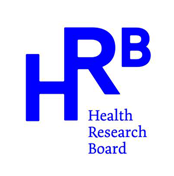There is ample evidence which shows that populations who experience social exclusion and deprivation have poorer health outcomes than populations who do not. We also know that there is a gradient in health where wealthy populations experience significantly better health than those at the other end of the spectrum. This is particularly true for people at the sharp end of deprivation such as homeless populations.
Research shows that populations who experience long-term homelessness often have a need for more frequent and more comprehensive healthcare interventions but also that they have more difficulty accessing services in the first place. The notion that those who need services the most are also the ones who receive them the least was observed by Julian Tutor Hart (Tudor Hart, 1971) in 1971 and still unfortunately remains the case today.
To understand how to make health services more accessible to populations experiencing homelessness, a body of research has investigated the issue. Much of this research is focused on the issue of health service access from the point of view of the individual person attempting to access care and it has found that many factors promote and impede healthcare access for individuals experiencing homelessness. These include: the busy lives they lead with many competing activities such as acquiring money, food and shelter; distrust of medical professionals often based on a history of difficult interactions with people in positions of authority; prior experiences of stigma from healthcare practitioners and staff, and more. These are important findings that help us understand the experiences of healthcare access for people who have substantial needs but they also place the focus of investigation at that individual level, arriving at possible solutions that focus primarily on addressing individual barriers.
However, healthcare systems are the other side of the equation of a healthcare encounter and it is equally important that we understand their role in making healthcare services accessible. An inaccessible health system cannot be made accessible alone by patients doing something different – the system bears a large part of the responsibility for making that happen. For that reason, my research has focused on how health systems can make themselves accessible to populations experiencing homelessness.
My research found that these health system factors positively impact healthcare accessibility for populations experiencing homelessness:
- When healthcare is organised around the person, with services taking responsibility for accessibility, it can be provided in a manner that is personalised and flexible which results in meeting the particular needs of the patient. In such instances patients are helped to understand the next steps in their treatment pathway and are given assistance in reaching those next steps, leading to the patient journey being easier to navigate.
For example, many specialised homeless healthcare services are staffed by professionals, and sometimes peer navigators, who have prior professional and/or personal experience with the population group and know what to expect. They anticipate the common health issues to look out for and they understand importance of addressing multiple issues in one visit if possible, such as giving needed vaccinations or screenings, even if a person presents for something unrelated. Crucially, they meet the person where they are by proactively providing medications like opioid substitution treatment to enable a patient to remain in a clinic setting long enough to address health issues without experiencing potential withdrawal symptoms, as drug addiction is common among populations experiencing homelessness.
- When healthcare leadership and management support and champion inclusive cultures, it allows services to be delivered in a non-stigmatising, respectful and empathetic manner which leads to trust developing between patients and staff. Over time, the experience of trust in a context of an inclusive culture, reinforces and strengthens the patient/practitioner relationship and ultimately allows for ongoing healthcare accessibility.
Healthcare leaders and managers can support the kind of person-centred care discussed above by enabling their staff to work outside of the typical rules in healthcare. For example, they may provide a framework for service delivery that allow practitioners see patients without an appointment and at irregular hours, and which provides flexibility with regard to appointment length. Doing so allows staff to more easily meet the needs of a patient group which often have trouble with keeping appointments and whose complex needs cannot be addressed in the space of a typical 15-minute interaction. Leaders should also advocate for socially excluded populations in policy settings to combat stigma and to promote buy-in among policy makers who ultimately make funding and high-level health service planning decisions.
- When health services are delivered in a flexible manner, practitioners can use their expertise to anticipate, and adapt care to, the needs of the patient. As a result, the patient’s needs are identified, and if met, the patient experiences less frustration and fear which leads them to feel seen and understood. This in turn, promotes ongoing engagement with services and ultimately leads to ongoing access taking place.
Healthcare services that are accessible to populations experiencing social exclusion and homelessness focus less on the needs of the health service (to save money, to free up beds, to have patients move from point a to b) and more on those of each individual patient. Allowing practitioners to build relationships and spend time with patients that does not address a specific, quantifiable medical need can be necessary to develop a rapport and a relationship that will allow the patient to seek care on an ongoing basis and to ultimately have their needs met. Most people experiencing long-term homelessness have had their trust violated a number of times in their lives and have experienced trauma and neglect. They should not be expected to trust a stranger in a position of authority the first time they meet them. Rather it is incumbent on health services to make themselves comfortable and deserving of trust and engagement.
Healthcare access for everyone, and especially for populations experiencing social exclusion is about much more than having a clinic in a convenient location. As one of my interviewees in the second study in my PhD said:
“Accessibility to me, isn’t just about putting a clinic in the hostel. It’s not just about giving you a taxi to go there. It’s about empowering people to understand, giving them the space, giving them the attention so that they can take in the information, and also making sure it’s not about your own shit.”
– Interviewee 4
To read the full findings from the first study in my PhD, click here to read my articles from the BMJ-Open. My full PhD thesis is available here and more publications will be forthcoming.
Bibliography
Tudor Hart, J. (1971). The inverse care law. The Lancet, 297(7696), 405–412. https://doi.org/10.1016/S0140-6736(71)92410-X
 | Dr Rikke Siersbaek is a SPHeRE Programme graduate from the Centre of Health Policy and Management in Trinity College Dublin where she is now working as a post-doctoral Research Fellow with Dr Sara Burke. Her current project is a realist review seeking to understand how, why, for whom and to what extent financial incentives improve the success of stop smoking programmes. Her research interests include health inequalities, health systems, and realist approaches. Her PhD was focused on how health systems can make healthcare more accessible for populations experiencing homelessness. Her supervisors were Prof Steve Thomas, Dr Sara Burke, Dr John Ford and Prof Clíona Ní Cheallaigh. She is a member of the executive committee of the All-Ireland Inclusion Health Forum. |

